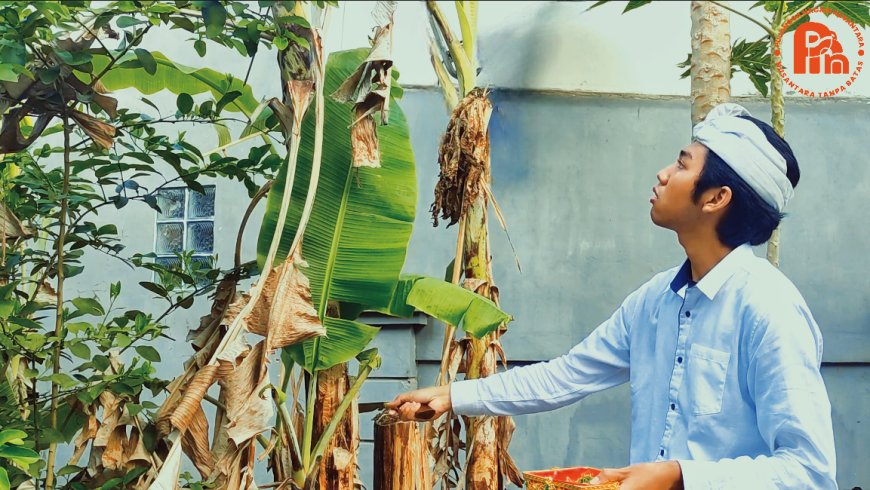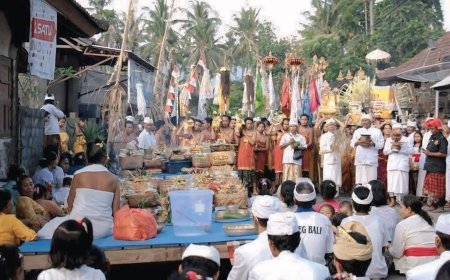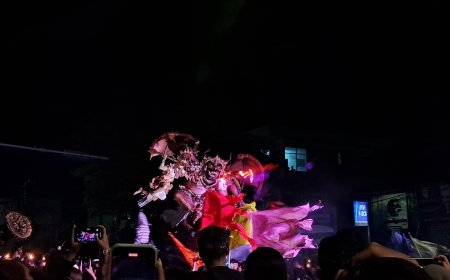Tumpek Wariga Where the Harmony of Flowers and Fruits Tells a Profound Meanings
Bali, an amazing island, celebrates Tumpek Wariga every 210 days. In this tradition, humans and nature communicate through the ngatag procession. More than just a tradition, Tumpek Wariga holds the key to the daily balance of nature. Beyond being a religious celebration, this is a call to preserve cultural and natural heritage. Let's join and become part of this extraordinary story that not only captivates but also teaches the meaning of gratitude for the blessings of nature and its beauty.

Bali, an amazing island with its rich culture and natural beauty, has a tradition called Tumpek Wariga. This tradition is one form of respect for Dewa Sangkara, the manifestation of Ida Sang Hyang Widhi as the god of vegetation. This tradition also reflects the philosophy of Tri Hita Karana, which is the balance between the relationship between humans and God, humans with humans, and nature.
Tumpek Wariga is a tradition that takes place every 210 days, or every six months according to the Balinese Hindu calendar. This tradition falls on the day of Saniscara Keliwon Wuku Wariga, which means 25 days before Galungan, the day of the victory of good over evil. Tumpek Wariga has several other names, such as Tumpek Pengatag, Tumpek Pengarah, or Tumpek Bubuh. These names describe the procession and offerings made during this celebration.
The Tumpek Wariga ceremony is usually held in gardens, rice fields, or places where there are plants. Balinese Hindus offer canang, banten, and bubur sumsum made from rice flour. This bubur sumsum is also called bubuh, which symbolizes purity, simplicity, and humility. Bubur that is offered to plants is accompanied by mantras and the ngatag procession, which is the act of tapping the trunk of a tree with a knife or machete. This is intended to give encouragement and guidance to the plants to grow healthy and bear plenty of fruit. In addition, the ngatag procession is also a form of communication between humans and plants, which shows respect and love for nature.

Ngatag Procession (Photo Source: Personal Collection)
The sacred mantra that is recited when offering offerings and performing the traditional ngatag procession is as follows:
“Kaki kaki, Nini nini, Sarwa tumuwuh. Niki tiyang ngaturin bubuh mangda ledang tumbuh subur, malih selae lemeng Galungan. Mabuah apang nged, nged, nged…”
Meaning:
“Grandpa, Grandma, All living things. I offer this porridge so that it will grow well, later when Galungan comes. May it bear fruit so much, much, much…”
After reciting the mantra, the trunk of the tree is tapped three times while chanting nged, nged, nged. This is intended for the tree to bear many fruits so that it can be a provision for Galungan later. In addition, tapping the tree is also a way to awaken the positive energy of nature and plants. After performing the ngatag procession, the bubur sumsum that is offered is stuck to the trunk of the tree or its leaves. This is intended to feed and fertilize the plants.

Offering Bubur Sumsum (Photo Source: Personal Collection)
Tumpek Wariga is not only a religious tradition, but also has a deep relevance to human life today. For example, by planting trees, Balinese Hindus play a role in maintaining the balance of nature, supporting the survival of all beings. The trees that are planted provide benefits not only for humans, but also for the environment, such as reducing the impact of global warming, preventing soil erosion, and improving air quality. Tree planting is also a symbol of caring, sharing, and being grateful to nature, a source of infinite wealth and beauty.
Tumpek Wariga teaches us about a deep sense of gratitude for the wealth of nature. The ceremony and offerings are full of expressions of gratitude to nature as a manifestation of Ida Sanghyang Widhi Wasa, the Supreme God. This celebration is an example of harmony between culture, religion, and nature, providing inspiration to the world in maintaining the balance of nature and human well-being. By taking care of nature, we are taking care of the future for ourselves and the earth we live on.
Thus, Tumpek Wariga provides a reminder of the importance of taking care of and respecting nature. It is a valuable lesson for the younger generation about their responsibility in preserving the environment and culture. Through this celebration, not only the blessings of nature are celebrated, but also a real contribution to maintaining the balance of nature and the well-being of humans in Bali. Hopefully, we all reflect on the profound meaning of this celebration and take the necessary action to protect the sustainability of this universe. Thus, we can all play an active role in taking care of nature and passing on this cultural heritage to future generations.






























































